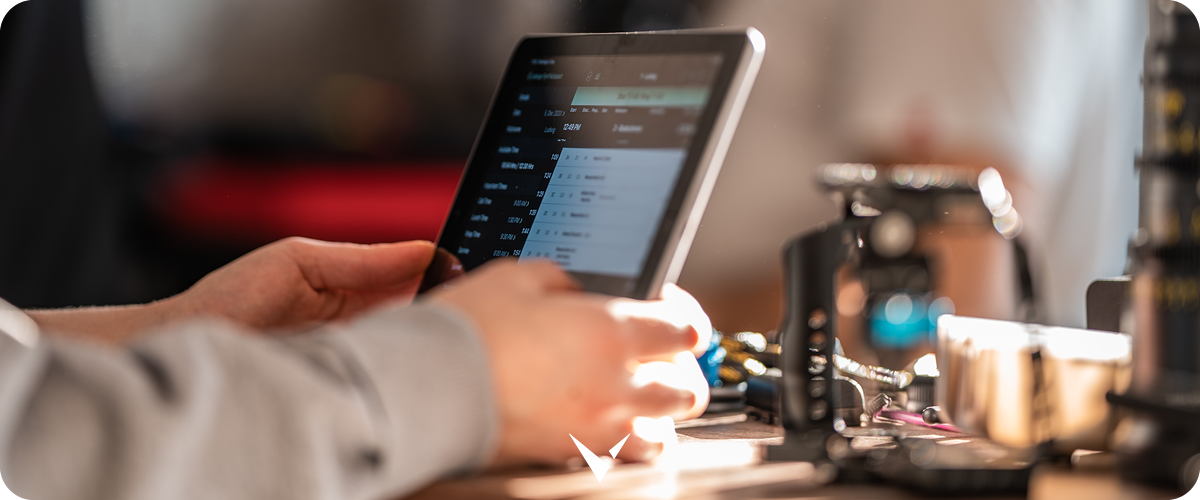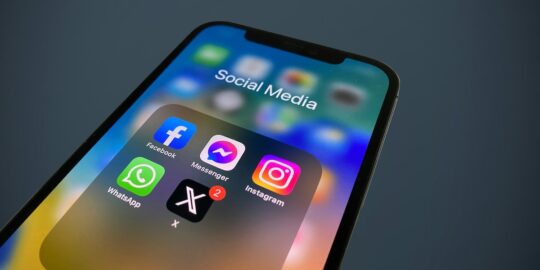
Forward-thinking educators are always looking for ways to bring new technology into the classroom, which is why many schools have started providing tablets for students to use. However, many teachers still don’t know how to use tablets in the classroom effectively.
In this article, we’ll share some creative ways to incorporate tablets into your lessons and show you how to make the most out of these devices by pairing them with a screen-mirroring solution.
Screen-mirroring solutions enable teachers to review students’ work on their tablets and share it with the wider class by connecting each device to the classroom display. This makes lessons more interactive, helps engage students, supports collaborative learning, and allows teachers to provide immediate feedback.
How to Use Tablets in the Classroom – 6 Ideas
Here are six examples of how to use tablets in the classroom alongside a screen-mirroring solution to take your lessons to the next level.
1. Set an independent research task
A great way to use tablets in the classroom is to assign your students a research task and have them use their tablets to find the information they need.
For example, let’s imagine you’re teaching history. As part of a lesson on Ancient Egypt, you might set your students a task to find out everything they can about King Tutankhamun and then draw a mind map on their tablet to illustrate their findings.
Once they’ve finished, you can ask certain students to present their mind map to the rest of the class by beaming it to the classroom display using the screen-sharing technology you have in the classroom.
The best screen-sharing solutions will enable multiple up to four students to share their work to a display side-by-side so that students can compare their research and share notes with each other and the rest of the class.
Not only is this a great way to get them engaged and excited about the topic, but it also teaches them valuable research skills. It allows them practice using different kinds of devices to collect information, all the while learning relevant subject matter.
Of course, teachers should remain in full control over what gets shared on the central display. It’s a good idea to check over each student’s work to ensure it’s appropriate before you let them present it to the rest of the class.
2. Use tablets for note-taking
Taking notes with pen and paper gets a little boring after a while. If you want to mix things up to help students stay engaged during a particularly dry lecture, consider letting them use a note-taking app on an iPad or other tablet instead.
The latest Apple Notes application for iPad is powerful and provides users with a bunch of formatting controls to make note-taking more interactive and engaging. Students can type notes or write them freehand, draw sketches and maps, and even take photos within the app. This ability to mix different media types can come in useful.
Once they’ve finished taking notes, you might want to pick out students that did a particularly good job and have them share their notes with the rest of the class by mirroring their screen on the classroom display.
Note: Students with certain motor disabilities may struggle to make notes on tablets. Where this is the case, you might want to provide the student with an alternative solution instead, like a laptop or the ability to take screenshots of what’s being shown on the main display. That’s why it’s a good idea to choose a device-agnostic screen-mirroring solution that can connect to any kind of device.
Related: Seven key questions you must ask when evaluating a screen-mirroring solution
3. Incorporate educational games into your lesson
There are a ton of educational games and learning apps for tablets out there. You can download these games onto devices via the app store and use them within your lessons to boost student engagement.
For example, you’ve just been teaching students about trajectories and angular momentum as part of a physics lesson. Students can put their new knowledge to the test by playing popular iOS games Angry Birds on their iPads in class.
You can then mirror the game with the whole class or certain groups of pupils so that everyone can see what is happening while individual pupils take part on their own devices. Watching others play video games may seem boring to some, but it’s a favorite pastime for many who enjoy evaluating other people’s strategies to solve problems.
4. Set Creative Projects
Tablets are much more well-suited to specific creative projects than laptops. For example, tablets are typically portable and have built-in camera apps. This means that students can use tablets to take photos or videos on the go, unlike laptops.
As part of a biology lesson, you could assign your students the task of finding and taking photos of all the wildlife they can find in the school playground using their tablets. They could then use photo editing or collage apps to stitch them together as part of an art project.
If you’re teaching a class on media or film, you could have your students record and edit a short video using their tablets. Once they’re finished, you can share their project with the class by mirroring it to your classroom display.
5. Watch Video Clips
You can use tablets to cater to visual learners by enabling students to watch educational video clips in class. Share a video on the classroom display and then mirror it to each student’s device so they can get a close-up view.
One cool thing about tablets is that some even support immersive, interactive, 360-degree videos. Students can move their tablets around while watching these interactive videos to explore the virtual world, which helps to keep them engaged.
Related: Finding the Most Engaging Technology for the Classroom
6. Create learning experiences beyond the classroom
One of the best things about tablets is how portable they are. You may not want to carry a laptop with you on a field trip – but you can take an iPad!
You can use tablets to create learning experiences beyond the classroom. For example, you could hand them to each student before a trip to the museum and have them take notes of the things they learn on their devices. When you get back, you can mirror the devices to your classroom display to share what they’ve learned.
As part of a P.E. lesson on orienteering, you could give one tablet to each group of students and have them use it to practice their navigational skills and find their way to a checkpoint.
You can even download stargazing apps onto the class tablets and use them to help teach students about astronomy. Students can go outside into the playground, point their tablets up at the sky, and the app will show the constellations as they move them around.
The possibilities are endless!
Final thoughts
There you have it – six ideas for how to use tablets in the classroom. As you can see, there are a ton of potential use cases for tablets in an educational setting, but you’ll need a good screen-mirroring solution if you want to make the most out of them.
And for that, we’ve got you covered.
Vivi is the only wireless screen-mirroring solution built for educators. It’s completely product agnostic, so it works with any device (not just tablets, but laptops, desktops, and smartphones, too) and comes with a bunch of features specifically designed for the educational sector. We’d love to tell you more, but the best way to see what Vivi can do is to try it out for yourself! Get in touch to book a demo today.



